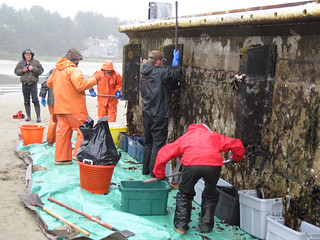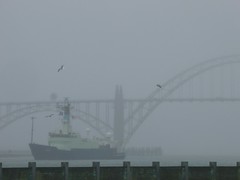 CORVALLIS, Ore. – Samples of albacore tuna caught off the West Coast of the United States show minute traces of radiation that can be traced to the Fukushima reactor disaster, according to an interdisciplinary team of scientists from Oregon State University and the National Oceanic and Atmospheric Administration.
CORVALLIS, Ore. – Samples of albacore tuna caught off the West Coast of the United States show minute traces of radiation that can be traced to the Fukushima reactor disaster, according to an interdisciplinary team of scientists from Oregon State University and the National Oceanic and Atmospheric Administration.
The radiation levels in fish analyzed to date are far below anything that would pose a risk to humans who consume the fish, the research team emphasized. The findings are preliminary; additional fish remain to be tested.
But the findings could reveal new information about where Pacific albacore travel during their migratory lives – and how what happens in one part of the ocean can affect the food web thousands of miles away.
The team has collected and tested fish caught off the U.S. West Coast both before and after the devastating March 2011 Japanese tsunami and subsequent release of radioactive material into the ocean by the Fukushima Daiichi nuclear reactor.
“We’re still processing new fish, but so far the radiation we’re detecting is far below the level of concern for human safety,” said Delvan Neville, a graduate researcher with OSU’s Radiation Health Physics program and a co-investigator on the project.
People are constantly exposed to radiation from the natural environment, Neville pointed out. “To increase their normal annual dosage of radiation by just 1 percent, a person would have to eat more than 4,000 pounds of the highest (radiation) level albacore we’ve seen.”
Neville will present the team’s preliminary findings on Oct. 27 at the Heceta Head Coastal Conference in Florence. Richard Brodeur, the NOAA Northwest Fisheries Science Center biologist who serves as lead investigator on the project, reported the same findings to the recent annual meeting of PICES, the North Pacific Marine Science Organization, in Japan. The researchers also plan scientific journal articles.
Read the complete story from OSU News & Research Information








